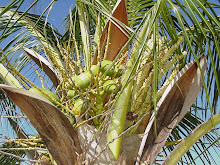Quilling is the art of rolling and shaping narrow strips of paper (1/8" thick) and arranging them to form designs. It is thought to date back to the 15th century. At that time the paper was rolled on bird quills; thus, the name quilling.
Quilling was first used by the Italian and French nuns in creating exquisite designs to decorate religious artifacts and the walls of churches. As the art form spread to new parts of the world, it was fashionable for the ladies of the 17th and 18th centuries to create beautiful and delicate edgings on folding screens, firescreens, mirrors, boxes and pieces of furniture, with quillwork.
The hatpin eventually replaced the quill and today there are quilling tools available.
Yesterday, one of the ladies in my DAR chapter held a quilling class in her home. Carol had all of the supplies laid out before us on her dinning room table. There were ten of us taking the class.
First, Carol had us learn and make the basic quilling shapes. Once we made them, we glued them to a card that gave the name for each shape. It would be our guide to making future projects.
We used a quilling tool during class. It is a small, metal wand that has one slotted end. The end of the paper strip goes into the slot and then you roll the paper onto the wand's slotted end. The amount of tension that you roll the paper with determines what kind of end product you want...more tension equals a tighter roll.
Once we had all of our practice rolls and scrolls completed it was time to start on a picture. Carol had a pattern of two flowers for us to work with. She had drawn the flowers on paper and then put that paper over a small Styrofoam block and then covered it all with wax paper. The wax paper would help to keep the quilled paper from sticking to the pattern on the block.
Carol had many pretty colors of paper strips to choose from. I chose purple and red. I measured, rolled and glued my quillwork together on the block. I used straight pins to hold the quillwork together. Once it dried, I gently pulled the pretty flowers off of the block and glued them to a piece of card stock. This is what my first attempt at quilling looks like.
When I came home, I felt that my artwork still needed something to finish it. I had some empty space that needed filling just above the flowers.
In the little kit that Carol sent home with us was a pattern and some paper strips for making a bee...perfect!
(Now bear with me...it is hard to snap a picture one-handed and quill one-handed at the same time).
I traced the bee onto the paper, put the paper onto the foam block and covered it with wax paper.
I read the instructions, measured and cut the strips (4" or 6") and began rolling. Once rolled, I glued the end piece of the paper roll. I then pinned the bee's head onto the foam block.
Next came the body of the bee. That would be a loose roll that would be pinched to create a teardrop shape. I glued the body to the head and kept it in place with a pin.
Finally, the wings. They were made just like the body but with gold colored paper.
When the glued bee pieces dried, I gently lifted them off of the wax paper and glued the finished bee to my quilled flower picture. Not bad for a first attempt at quilling.
Thank You Carol!




















































cool and pretty Jill......kit
ReplyDeleteVery crafty! Jenn
ReplyDelete